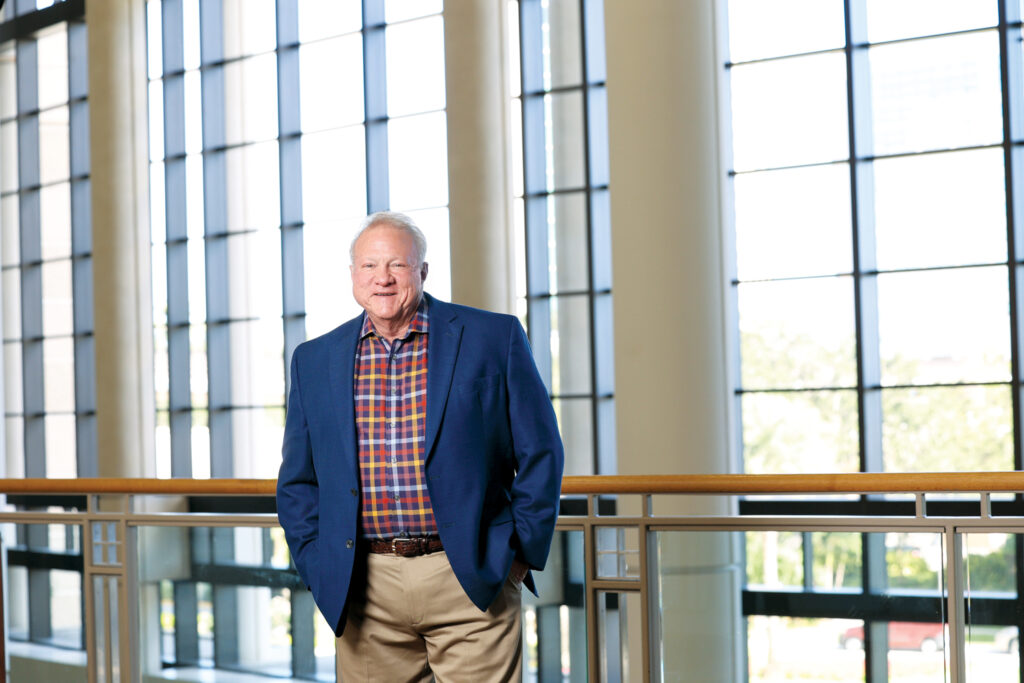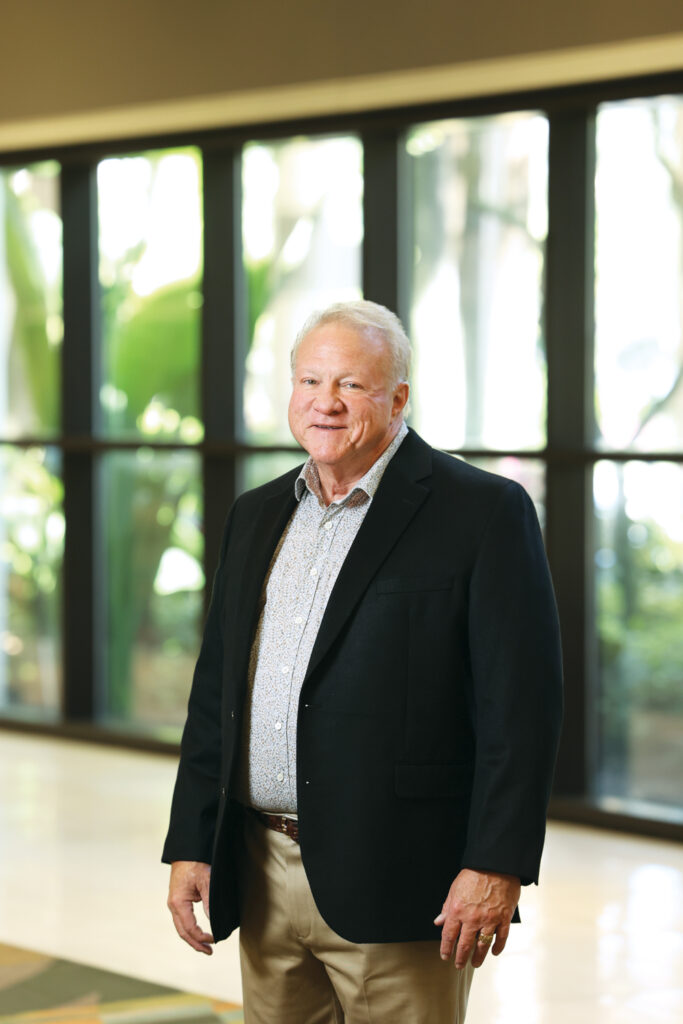
In 2021, Roy Chism retired as owner and operator of The Chism Co. Inc., the canvas and metal fabrication shop his father founded 70 years prior in San Antonio, Texas. Though Chism occupied several roles throughout the years, his earliest task remained most critical to continuing his father’s success—“learning how to learn,” a skill Chism passed on to his own sons, Ryan and Logan, who now operate the third-generation business.
“Working middle and high school summers and breaks at the shop, I picked up some fabrication skills from our awning makers and machine operators, but my presence early on was not needed—certainly not as a child or teen,” Chism says. “I was there to learn how to manage myself and my work, learn about people, and learn how to work with other people. It was a formative experience no level of conventional education could replace.”
Being open to learning has helped Chism overcome challenges throughout his career by viewing them as opportunities to adapt and grow. Taking a company leadership role was one of his first such opportunities.
It nearly happened overnight when his father endured unexpected health issues as Chism was completing his last semester of an undergraduate accounting degree. He stepped into the business, and as his father recovered, the two had time to fully share processes, strategies and goals for the company.
It was a lesson Chism carried into his own transition of the business. When Ryan and Logan opted to follow their father’s footsteps, Chism implemented a multiyear succession plan—a tactic he encourages all business owners to adopt. “We don’t get to choose the timing of life’s disruptions—prepare early.”
One of the most significant disruptions Chism faced after assuming full company ownership was the Texas economic crisis. More than 400 banks in Texas failed in the late 1980s, property developers and general contractors declared bankruptcy, and contracts at The Chism Co. all but evaporated.

“A basic rule of business I’ve consistently followed is to always hire people smarter than you; someone else is always more experienced and more knowledgeable,” Chism says. “So, that’s exactly what I did.” A turnaround specialist assisted in the rebuilding of both the financial and operating positions while helping to establish a more conservative growth plan that streamlined internal processes and set the company up for long-term profitability.
“In the years since, we’ve hired MBA classes to conduct sales research, develop forecasting models and address potential market changes as well as an industrial engineering group to help us implement lean production capabilities into what was a formerly custom job shop. I highly recommend these types of resources. I gained insights into our customers and our production processes I never could have discovered on my own.”
Combined with Chism’s immediate embrace of machine automation, these business insights have contributed to the company’s steady, decades-long product diversification. The Chism Co. now includes upholstery work; a wood fabrication shop producing hospitality furniture, seating and tables; and a metal fabrication shop, in addition to its array of shade, shelter, military and wholesale awning products that can be found across the entire country.
Even before automated equipment increased the shop’s capacity, Chism was not one to turn down a difficult project. Case in point: The company once manufactured and installed more than 3 acres of shade for SeaWorld San Antonio in less than 100 days—with some fabric applications requiring the space of a football field to stretch, pattern and cut the materials.
So, when he recognized the expansion opportunity that automation provided, his custom, speed-to-market approach took on a whole new meaning. In the late 1980s, The Chism Co. began manufacturing and delivering shade products to national restaurant and retail chains—all without sending employees to the job sites. A risk at the time, it has proven to be a successful strategy
to this day.
“Because of ATA connections, we are able to contract trusted local businesses to conduct site measurements, permitting and installations across the country. It saves our customers money, it allows our employees to spend more time at home with their families, and it helps our ATA friends and members stay connected, financially participating and working together. This is a huge advantage of the association,” Chism says.
He believes these connections will become ever more important as the industry evolves more rapidly. “Whether it’s developing solutions for labor shortages or supporting industry growth as new markets recognize the value of textiles and demand new performance capabilities, we will need a community to learn from and lean on so we can take on new opportunities together.”
Holly Eamon is a business writer and editor based in Minneapolis, Minn.
SIDEBAR: Roy Chism’s tips for optimizing your ATA membership
- Participate. You receive no shortage of information and invitations as a member—but it’s up to you to join the conversations and events around you.
- When you do participate, engage. Don’t just show up.
- Ask a lot of questions. So many members are willing to share their expertise and help you succeed. All you have to do is ask.
- Listen more than you talk. It’s a critical skill for learning and relationship building.
- Don’t be embarrassed to say, “I need some help with …” or “Can you explain … ?” You can’t improve or grow without first recognizing the knowledge gap you need to fill. No matter what type of expertise you’re lacking, someone else has been in your shoes and is willing to offer guidance.
What it really comes down to is networking and relationship building—in person, to be more specific. … Attend events where you can pick and choose the topics you want to learn more about and ask all the questions you want. Forming industry relationships, building knowledge based on a variety of perspectives—these are huge benefits that can contribute to the growth of your business.
SIDEBAR: Q&A with ATA board chairman Roy Chism
What will your priorities be as ATA’s new board chairman?
In the years I’ve served on the board, our focus has always been on sustaining a few key fundamentals: bettering ATA to better serve members, growing the value of membership and growing the association and its strength.
My role is to maintain this continuum of betterment, every year, in every way possible. But I want to be clear that this is not a “me” moment but rather a team undertaking. And as a board, we operate in three- and five-year plans derived in large part by input from ATA membership, developed and agreed upon by all board members, creating the basis and direction for association leadership and staff deliverables going forward.
Sometimes we get big wins fast and early. Other opportunities can take more time. In fact, some of what we’re working on now—and will continue to develop into the future—came from past chairs. I recognize interests that were developed from Katie Bradford’s chair to Steve Ellington’s contributions, Kathy Schaeffer’s shaping and, most recently, Amy Bircher’s works. And while some of Amy’s impact is starting to come into play now, a lot won’t fully be felt for years to come; it’s exactly that continuum.
What remains most important is that our members feel they are valued by—and find value in—their association. I’ll do everything in my power, in partnership with the board, to uphold this priority.
How is ATA working to remain relevant to a changing industry?
ATA is constantly listening to and engaging our members in decisions that will set our organization up for continued success. Recent examples of this include:
• Our name change: We wanted to ensure our members’ businesses and products would be better represented as our industry began—and continues—to evolve more quickly. The ATA name reflects the association’s increasing product diversity; the advancement of fabric applications, markets and special interests; and ATA’s growing membership.
• Our shift to an open association operating structure: We removed barriers that prevented access to and participation across all special interests and divisions, helping members more easily address challenges and leverage strengths common to all. Many skills across our divisions are transferable. Having the opportunity to meet and form relationships with members who are skilled in a variety of areas is a major advantage I have benefited from personally and want all members to have access to. Benefiting from the knowledge and experience of our peers is invaluable.
What key industry challenges do you hope to support through ATA?
I favor a handful of practical, ongoing educational initiatives:
• To the generational shift in new member business ownership: more structured educational and “onboarding” opportunities.
• To the long-established member: developing content relative to those more advanced needs.
• Common to all members: the labor shift, with initiatives across channels within our association, addressing trade education and curriculum specific to our industry as well as external joint paths toward legislation supporting entry-level manufacturing curriculum.
• Building a better expo and growing attendance: Expo growth is a constant to ensure we’re delivering value to fabricators and the supplier side, manufacturers, distributors and equipment providers.
How do you plan to incorporate feedback and ideas from members?
Our board includes diverse company sizes, types and markets and is representative of and well connected to association membership. This helps us incorporate member voices into our goals and priorities.
ATA’s overall approach is to listen to members singularly and to membership collectively, ask questions, listen again, confirm what they heard, create well-formed responses, validate with membership—and then implement. It’s a consistent, successful process I’ve observed throughout my board participation and plan to continue as chair.
This process keeps the association well synced and responsive to the changing industry it represents. To this end, I encourage members to fully engage and communicate. Board members, as well as association leadership and staff, are accessible to all. We want and value your feedback and ideas.
 TEXTILES.ORG
TEXTILES.ORG


